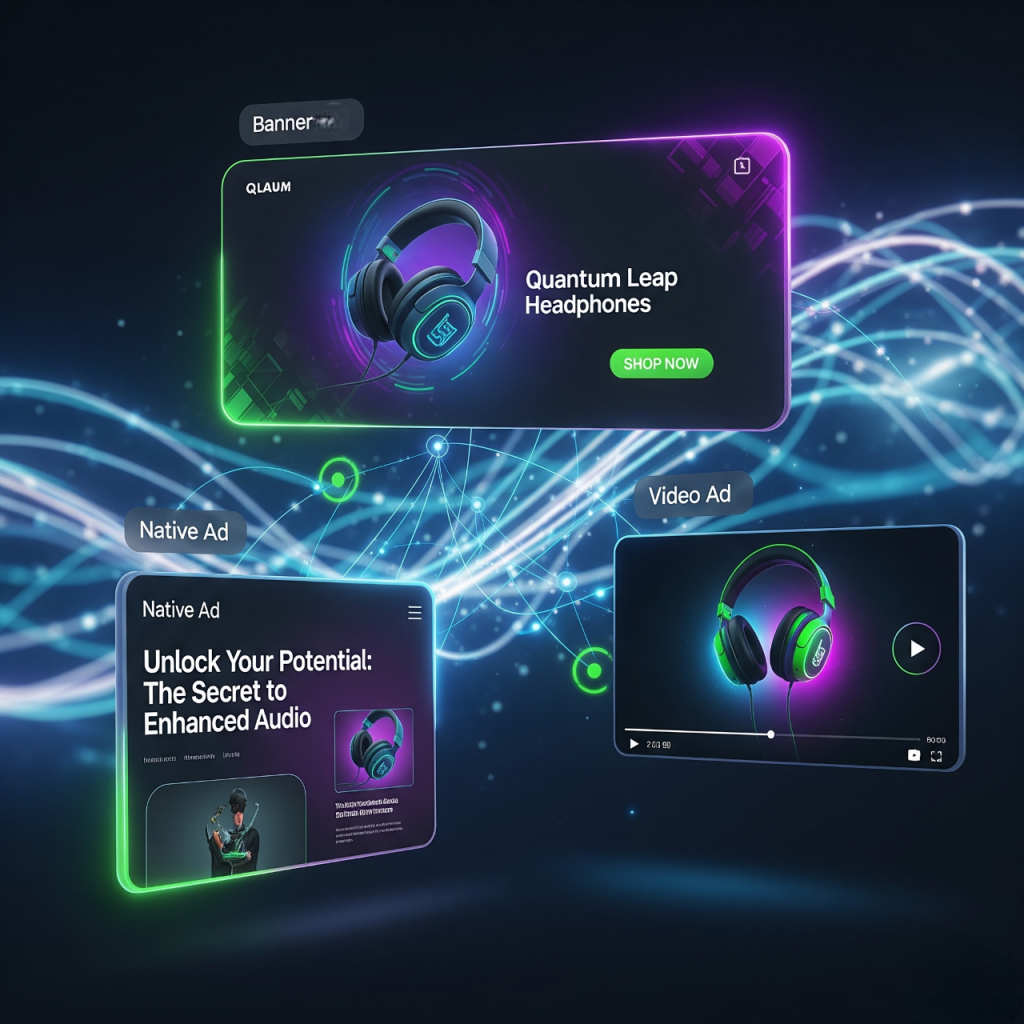Introduction
Over the past ten years, digital advertising has advanced quickly, giving marketers more options than before. Every format, including native ads, video campaigns, and banner ads, has advantages and disadvantages of its own. Selecting the appropriate ad type is crucial for optimizing brand awareness, engagement, and return on investment. A successful marketing campaign or a waste of money can be determined by knowing the distinctions between ad types and matching them with your campaign objectives. Ad performance is also greatly influenced by elements including device preferences, audience targeting, and content relevancy. Campaign effectiveness in a fiercely competitive digital environment is ensured by keeping abreast of new trends and analytics-driven insights.
What Exactly Are Native Ads?
Native advertisements are crafted to integrate effortlessly into the content landscape in which they are displayed. In contrast to conventional display advertisements, which may come across as obtrusive, native ads are designed to align with the aesthetic and ambiance of the platform, rendering them less disruptive and more captivating for audiences.
The primary advantages include:
- Elevated engagement rates: Due to their natural fit, users are more inclined to engage with them.
- Brand storytelling: Native advertisements enable marketers to weave narratives instead of merely promoting a product.
- Platform compatibility: They are effective across social media feeds, news websites, and content platforms.
- Trust building: When implemented effectively, native advertisements appear more genuine, fostering consumer trust.
- Enhanced conversion potential: By offering value and relevance, native ads can generate higher-quality leads and actions.
Native advertising is particularly suited for campaigns that seek to inform, entertain, or enhance brand recognition without disrupting the user experience.
Banner Ads: Are They Still Effective Today?
Once a mainstay of internet marketing, banner ads continue to be useful despite new difficulties:
- Visual impact: A well-crafted banner ad can still draw in viewers fast.
- Brand recall: Consistent exposure keeps your brand at the forefront of consumers’ minds.
- Limitations in targeting: Banner ads are frequently less contextually relevant than native or video ads.
Banner advertisements are still effective when used properly, notably in retargeting campaigns or on high-traffic websites, even though their click-through rates have decreased over time.
Why Video Ads Dominate in the Digital Era
Video content is now the dominant medium online, driven by social media platforms, streaming services, and mobile-first consumption. Video ads offer:
- Emotional engagement: Motion, sound, and storytelling create stronger connections with audiences.
- Higher conversion potential: Video can explain products in ways static ads cannot.
- Cross-platform versatility: Short-form videos, stories, and full-length content can be deployed across multiple channels.
Marketers increasingly favor video ads when the goal is deep engagement, brand storytelling, or product demonstration.

How to Match Ad Type With Campaign Goals
Choosing the appropriate ad format is mostly dependent on your goals:
- Awareness of the brand: Video content and native advertisements are excellent at exposure and creating stories.
- Direct reaction or sales: Banner advertising frequently result in clicks and conversions, particularly when combined with retargeting.
- Engagement and retention: Longer interactions and return visits are promoted by video advertisements.
Optimizing the efficacy of your advertising budget requires a thorough understanding of the target audience, platform, and campaign objective.
Which Format Works Best for Your Audience?
Audience behavior plays a crucial role in choosing ad type:
- Younger demographics: Often prefer video content on social platforms.
- Professional audiences: May respond better to native ads integrated into informative content.
- Broad consumer reach: Banner ads can provide visibility across multiple websites quickly.
Testing and analytics are key. Experimenting with multiple formats and measuring engagement metrics ensures you’re investing in the formats that resonate most with your target audience.
Balancing Budget, Reach, and Engagement
Each type of advertisement has varying costs and potential returns:
- Native advertisements: Typically necessitate content development, yet they generate high engagement rates.
- Banner advertisements: Economical, particularly for retargeting purposes, but exhibit lower engagement levels.
- Video advertisements: Incur greater production expenses, but offer significant impact and conversion possibilities.
A well-rounded strategy frequently proves to be the most effective. Distributing the budget according to campaign objectives and employing analytics to enhance your strategy guarantees optimal reach and engagement while avoiding excessive spending.
Conclusion
A thorough grasp of your objectives, target audience, and financial constraints is necessary when deciding between native, banner, and video advertisements. Video advertising are the most popular for engagement and emotional connection, banner ads are still useful for visibility and retargeting, and native advertisements are excellent at incorporating storytelling into content.
Professionals looking for flexible work options in marketing and digital advertising can take use of platforms like Wiraa in the rapidly evolving digital world of today. Wiraa helps professionals advance their careers while keeping up with changing advertising trends by matching them with remote positions in digital marketing, social media management, and content production. In order to ensure both professional development and hands-on experience in real-world campaigns, marketers can use Wiraa to access possibilities that enable them to create, analyze, and optimize campaigns across numerous ad formats.




